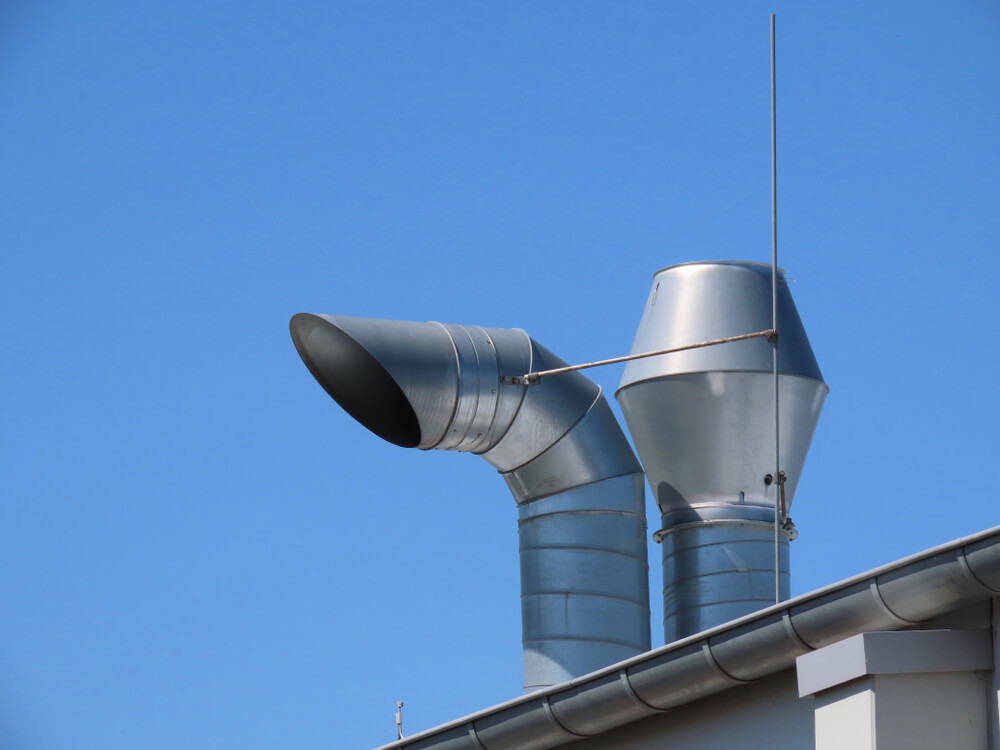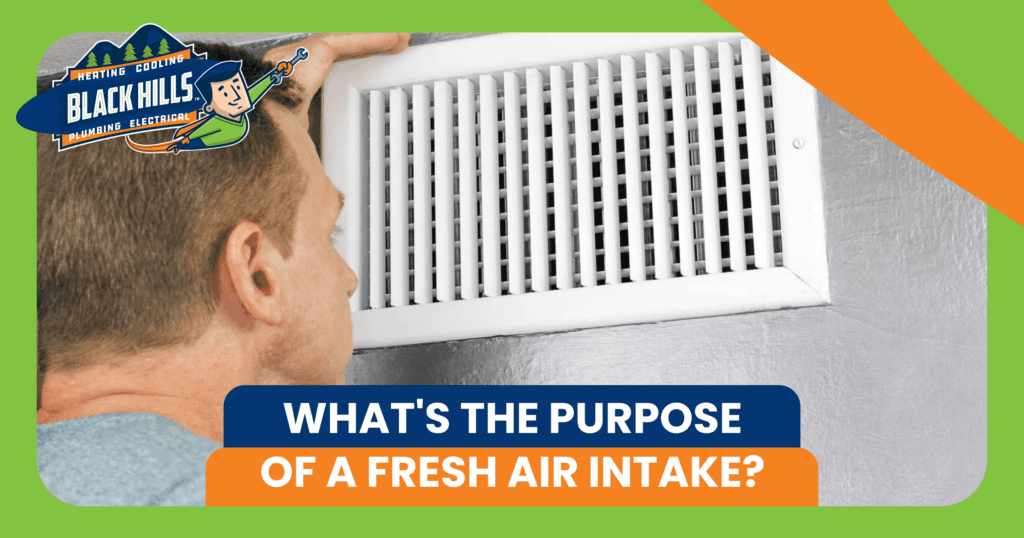In addition to maintaining comfortable temperatures and controlling humidity, your HVAC system plays an important role in the indoor air quality of your space as well. A fresh air intake allows the HVAC system to pull fresh air from outside and channel it to rooms via specialized vents. Every home is legally required to have a fresh air intake if a gas appliance, such as a furnace, is installed.
To comply with modern building codes, newer homes may have air intakes in several locations to help keep people safe and comfortable. Their main purposes include:
- Preventing Carbon Monoxide Buildup: Without an intake, or if blocked, negative pressure will cause carbon monoxide to back up in the flue vent and build up in your home. This colorless, odorless gas is deadly in high concentrations, so ensuring that your fresh air intake is working appropriately can be a lifesaver.
- Delivering Oxygen for Combustion: For every foot of gas a furnace uses, it needs about thirty feet of air. A fresh air intake delivers more oxygen from the outside rather than the unit burning up more oxygen from your indoor air. Outdoor air intake is essential in keeping your home properly ventilated and ensuring your space holds the right amount of oxygen.
- Improving Indoor Air Quality: A conventional furnace pulls air from your house. The fresh air intake delivers replacement air to draw from. Otherwise, the furnace will draw air from dryer vents, attics, crawlspaces, and other unconditioned areas, reducing air quality.
- Improving Efficiency: Without a flow of fresh air, a furnace in a restricted space won’t run as efficiently. Its blower motor will run slower. Some fan motors will use more electricity to compensate, possibly increasing your energy bill. A fresh air intake ensures constant airflow throughout the home.
- Extending Furnace Life: Air contaminated with corrosive materials can cause corrosion in heat exchangers, burners, and other components, shortening the life of your furnace. A fresh air intake allows for air to be pulled from the outdoors, which usually has fewer corrosive materials in the air, making it easier for your furnace to operate.
How Does a Fresh Air Intake Work?
As a component of your HVAC system, a fresh air intake is designed to draw outdoor air into a specific space. As mentioned above, it serves many purposes, including improving indoor air quality, maintaining proper ventilation, and enhancing the overall efficiency of your heating and cooling system.
The fresh air intake vents are strategically located away from sources of pollution or contaminants. A duct or series of ducts then connect the fresh air intake vent to the HVAC system. The ductwork ensures that the fresh air is properly distributed throughout the home.
To maintain clean air, these intake vents are also equipped with a damper and a filter to clean incoming air. It’s important to clean or replace the filter periodically and check the intake for debris or pests to clean out.
Don’t Block Your Fresh Air Intake Vents
Some homeowners block or stuff their fresh air intake, believing it will affect heating. This can have negative consequences, including a backdraft of carbon monoxide and toxic fumes. HVAC systems are designed to operate when they have a balanced supply of fresh air. Blocking the flow of fresh air can disrupt this balance, causing the system to work harder to maintain your ideal temperature. This can eventually result in higher energy consumption, higher energy bills, and a shortened HVAC lifespan.
What Does It Look Like?
 Often, the fresh air intake is on the side of the house. It can be in the form of a hood on an exterior wall, or chimneys on the roof. Keep your eyes peeled for a gray vent hood or a white or black plastic pipe. The fresh air intake leads to a duct that draws air into a vent near the furnace. In most cases, you’ll need an intake for a gas heater, gas water heater, or gas dryer.
Often, the fresh air intake is on the side of the house. It can be in the form of a hood on an exterior wall, or chimneys on the roof. Keep your eyes peeled for a gray vent hood or a white or black plastic pipe. The fresh air intake leads to a duct that draws air into a vent near the furnace. In most cases, you’ll need an intake for a gas heater, gas water heater, or gas dryer.
To find your fresh air intake indoors, look for a grilled vent near a gas appliance. The vent may be out in the open, or it can be installed behind the appliance or a door. If you can’t find it right away, look around and behind the furnace and check for an access panel.
Both inside and outside, the vent should not be blocked. A screen on the outside prevents pests such as mice from entering and debris, snow, and ice from blocking the vent. Some vents run up to the attic and then outside, while others lead directly outside.
Looking for Heating and Air Quality Services?
Whether you need furnace repair or believe there’s an indoor air quality problem, the licensed technicians at Black Hills Home Services can help. We take various measures to extend the lifespan of your heater and maximize its efficiency.
Aside from repairs and maintenance, we can provide or service a fresh air intake so your heating system works at full capacity and your family is safe. To learn more or request furnace or air quality services, contact us online or call 888-704-6293.

